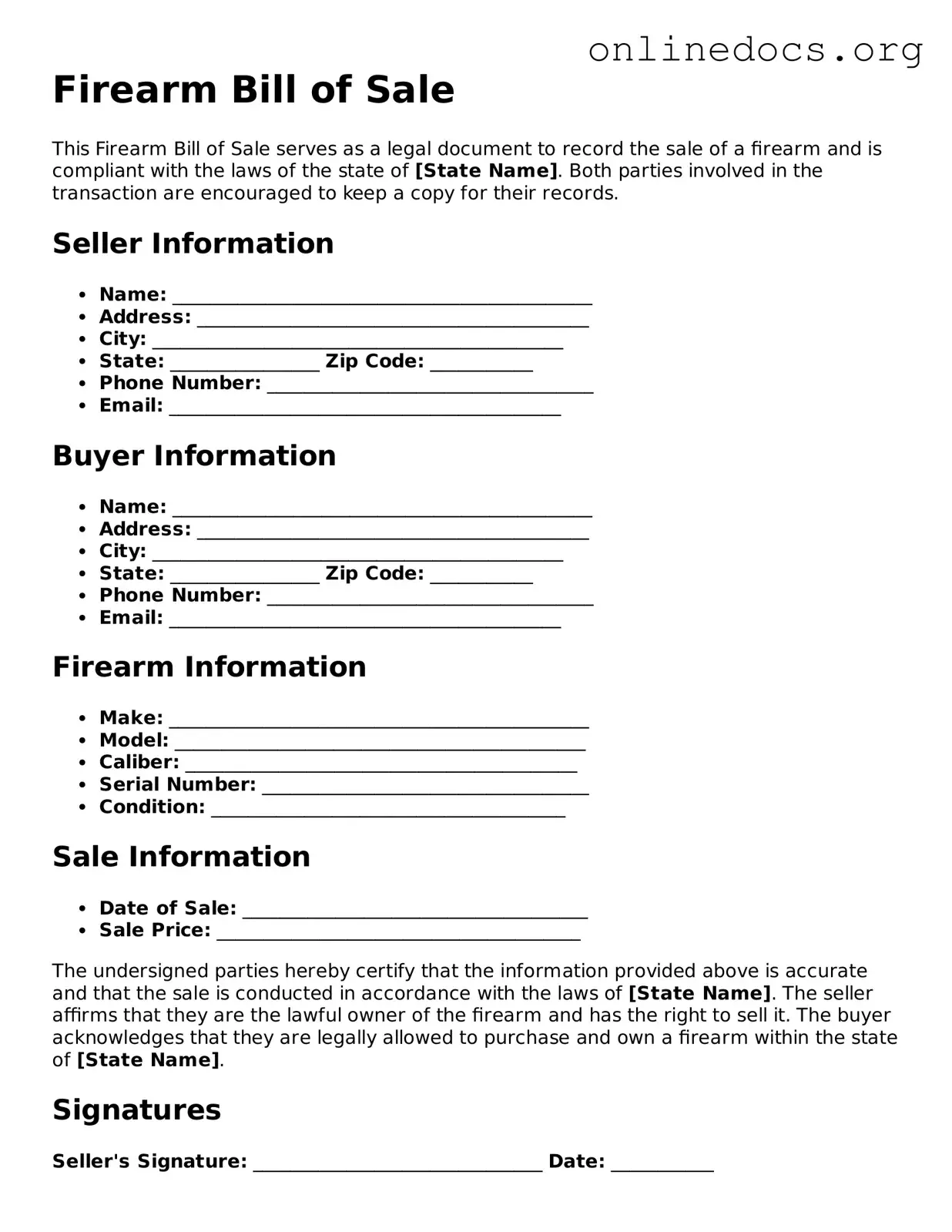The Firearm Bill of Sale form is similar to a Vehicle Bill of Sale. Both documents serve as a legal record of the transfer of ownership. In a Vehicle Bill of Sale, the seller provides information about the vehicle, including the make, model, and VIN, while the buyer's details are also included. This document protects both parties by outlining the terms of the sale and confirming that the buyer has received the vehicle in a specific condition, just as the Firearm Bill of Sale confirms the transfer of a firearm and its condition.
Another document akin to the Firearm Bill of Sale is the Personal Property Bill of Sale. This form is used for the sale of various personal items, such as furniture or electronics. Like the Firearm Bill of Sale, it includes details about the item being sold, the seller, and the buyer. Both documents aim to provide a clear record of the transaction, helping to prevent disputes over ownership and condition after the sale is completed.
The Rental Agreement is another document that shares similarities with the Firearm Bill of Sale. While it is primarily used for leasing property, it also outlines terms and conditions agreed upon by both parties. Just as the Firearm Bill of Sale specifies the responsibilities of the seller and buyer, a Rental Agreement details the obligations of landlords and tenants, including payment terms and property maintenance. Both documents establish a legal framework for the transaction.
The Lease-to-Own Agreement is also comparable to the Firearm Bill of Sale. This document allows a buyer to rent an item with the option to purchase it later. It contains details about the item, payment terms, and the conditions under which the buyer can acquire ownership. Similar to the Firearm Bill of Sale, it serves to clarify the expectations and responsibilities of both parties during the transaction process.
For those seeking protection during activities, a thorough Release of Liability document is essential to safeguarding against potential claims of injury or damage. Signing this form allows participants to acknowledge risks and forfeit future compensation rights, thereby promoting a safer experience overall.
The Warranty Deed is another document that shares characteristics with the Firearm Bill of Sale. A Warranty Deed is used to transfer real estate ownership and provides guarantees about the property’s title. Like the Firearm Bill of Sale, it includes the names of the buyer and seller, a description of the property, and warranties regarding ownership. Both documents aim to protect the interests of the parties involved and ensure a clear transfer of ownership.
Lastly, the Equipment Bill of Sale is similar to the Firearm Bill of Sale in that it documents the sale of equipment, such as machinery or tools. This document includes information about the equipment being sold, its condition, and the details of both the buyer and seller. Just as the Firearm Bill of Sale provides proof of ownership transfer for firearms, the Equipment Bill of Sale serves the same purpose for various types of equipment, ensuring that both parties have a clear understanding of the transaction.
